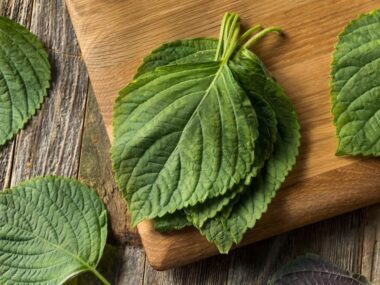Monk fruit, a sweet secret that’s been cherished in Thailand and China for centuries, is now gaining popularity worldwide as a low-calorie sweetener. This little green gourd, also known as “luo han guo,” packs a delightful punch when it comes to satisfying our sweet cravings. But what if you can’t find monk fruit at your local grocery store? Don’t fret! We’ve got you covered with a variety of fantastic substitutes.
The Sweetness of Monk Fruit
Monk fruit’s sweet magic is derived from its pulp, juice, and in China, even the peel is put to good use in traditional teas. What makes this sweetener truly special is its remarkable sweetness – it’s about 200 times sweeter than regular sugar. People around the world have fallen for its sweet allure, using it in smoothies, sweet drinks, and as a delectable topping for yogurt desserts.
But here’s the kicker – Monk fruit isn’t always readily available everywhere. So, if you’re all set to whip up a recipe that calls for this delicious ingredient and can’t find it on your grocery shelf, it’s time to explore some exceptional alternatives.
Exploring Monk Fruit Sweetener Substitutes
Let’s take a peek into the world of substitutes for monk fruit sweetener. From stevia sugar to regular sugar, honey to agave syrup, we’ve got you covered with a range of sweet options to tickle your taste buds. However, keep in mind, the sweetness of monk fruit is a tough act to follow. You might need to adjust quantities to match that unique monk fruit sweetness.
1. Stevia Sugar
Stevia sugar, another low-calorie sweetener, is a popular choice to replace monk fruit sweetener. Whether you opt for stevia sugar or the liquid version, be prepared to embark on a taste-testing journey. Liquid stevia is significantly sweeter than granulated stevia, so doubling the quantity is often necessary to reach the desired sweetness.
2. Regular Sugar
Good ol’ regular sugar, in both its granulated white and brown forms, can step in as a monk fruit sweetener substitute. But beware, it’s not as sweet as monk fruit, so you’ll need to be a bit more generous with your measurements. Keep in mind that monk fruit is approximately 200 times sweeter than sugar. So, you might need up to three times the sugar quantity to achieve a similar level of sweetness.
3. Honey
Honey, a classic sweetener, comes to the rescue when you need to replace monk fruit. However, it’s worth noting that honey is not as low in calories as monk fruit. To swap monk fruit with honey, you’ll typically need to use double the amount of honey to match the sweetness. The exact quantity may vary depending on the type of honey you choose.
4. Agave Syrup
Agave syrup is another crowd-pleaser and a sweet substitute for monk fruit. It’s quite sweet, though not on par with the monk fruit. When using agave syrup, particularly in smoothies, desserts, or as a topping, you’ll often need double the quantity compared to what your recipe requires for monk fruit.
5. Maple Syrup
Maple syrup, known for its distinctive flavor, can seamlessly step in for monk fruit in beverages and desserts. Pancakes, anyone? Although it won’t mimic the exact taste of monk fruit, it will certainly add the desired level of sweetness. A common ratio is two parts of maple syrup to one part of monk fruit, but be sure to taste your dish to ensure it’s perfect.
6. Molasses
Molasses, with its rich, robust taste, is quite similar to sugar in terms of flavor. The level of sweetness in molasses can vary depending on when it’s extracted during the sugar production process. It can successfully replace monk fruit sweetener by using double the quantity to match the sweetness. As always, taste your molasses first to gauge its sweetness.
7. Corn Syrup
Corn syrup, a derivative of cornstarch, is high in glucose and often used in processed sweets and various other products. When you can’t find monk fruit, corn syrup can be your go-to substitute. The ratio is typically 1:1, making it a versatile option for sweet drinks, baked desserts, and various other culinary creations.
8. Saccharin
Saccharin, a common sugar substitute, is a versatile alternative to monk fruit sweetener. Sold as a tabletop sweetener, saccharin can be used in a wide array of recipes instead of monk fruit. It’s incredibly sweet, ranging from 200 to 700 times sweeter than sucrose. The typical ratio for saccharin to monk fruit is 1:1, but feel free to adjust the quantity to suit your personal taste preferences.
9. Aspartame
Aspartame, a processed sweetener, offers a taste reminiscent of sucrose (table sugar). It can elevate the flavors in your dessert while ensuring the perfect level of sweetness. However, aspartame has a distinct flavor profile, so it’s crucial to taste it before adding it to your dish. Experiment with quantities to find your sweet spot.
10. Sucralose
Made from sugar, sucralose is a versatile sweetener that can step in for any other sweetener, including monk fruit. This substitute is about 600 times sweeter than sucrose (table sugar), and it comes with the added bonus of being calorie-free. You can use the same amount of sucralose as you would monk fruit because they have similar levels of sweetness. As always, taste your food to ensure it’s just right.
Monk Fruit Conversion Chart
Before you dive into your sweet recipe, refer to this handy chart to adjust your chosen substituteaccording to your taste. Different people have different preferences, so experimenting is key to achieving that perfect level of sweetness.
| Monk Fruit Sweetener | Stevia Sugar | White/Brown Sugar | Honey | Agave Syrup | Maple Syrup | Molasses | Corn Syrup | Saccharin | Aspartame | Sucralose |
|---|---|---|---|---|---|---|---|---|---|---|
| 1 tbsp | 2 tbsp | 3 tbsp | 2 tbsp | 2 tbsp | 2 tbsp | 2 tbsp | 1 tbsp | 1 tbsp | 1-2 tbsp | 1 tbsp |
FAQs
Can you substitute Splenda for monk fruit?
Absolutely! Splenda, which is made from sucralose, can seamlessly replace monk fruit. However, it’s worth noting that Splenda offers various other sweeteners besides those based on sucralose. They have low-calorie products made from stevia or even monk fruit. So, any sweetener from this brand could be a suitable substitute for monk fruit.
Is monk fruit a 1:1 sugar substitute?
Monk fruit is significantly sweeter than sugar, so a 1:1 substitution won’t provide the same level of sweetness. When you substitute 1 tablespoon of monk fruit, you’ll need about 3 tablespoons of sugar, whether it’s white or brown sugar, to match the sweetness. However, feel free to start with a 1:1 ratio and adjust the quantity to suit your taste.
Final Verdict
When your recipe calls for monk fruit and it’s not in sight at your local store, don’t hesitate to reach for one of the fantastic substitutes we’ve explored in this guide. These alternatives can be easily found in most grocery stores, sparing you from a treasure hunt. The best part? Your final dish will still be delicious, even without monk fruit. So, don’t let its absence hold you back from satisfying your sweet tooth and creating culinary magic in your kitchen!



